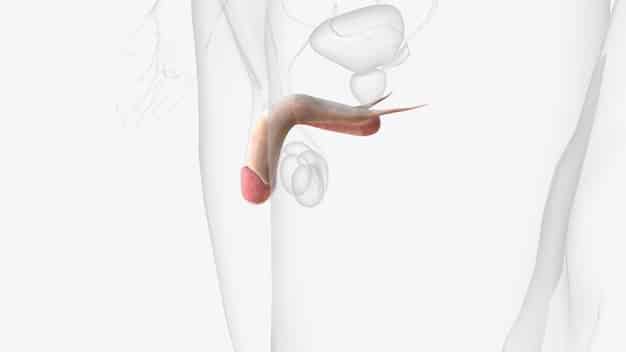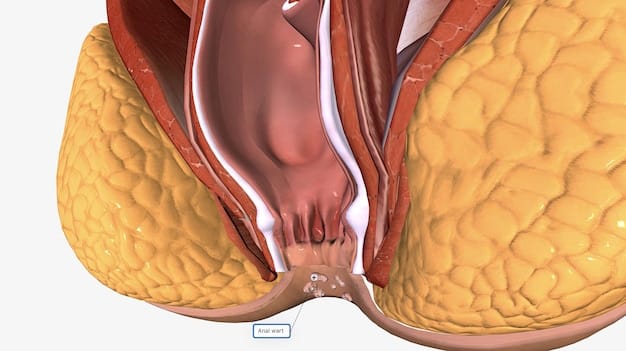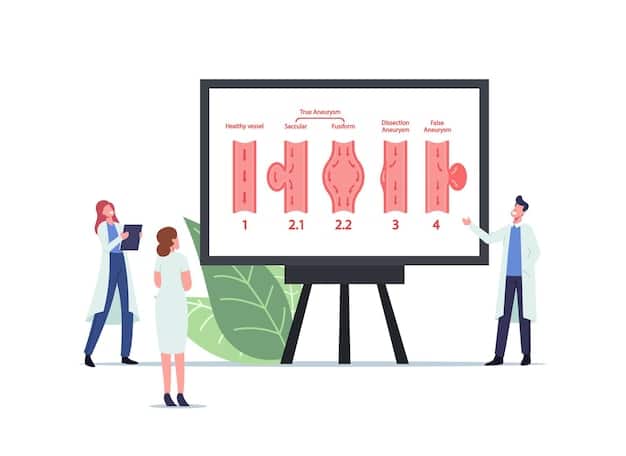The Latest Research on Peyronie’s Disease: Treatment and Outcomes

The latest research on Peyronie’s Disease focuses on innovative treatment options and their effectiveness in managing symptoms and improving patient outcomes. Understanding these advancements is crucial for informed decision-making.
Peyronie’s disease can be a challenging condition, impacting not only physical health but also emotional well-being. Recent years have seen significant advancements in understanding and treating this condition. This article aims to provide an overview of the latest research on Peyronie’s Disease: Treatment Options and Outcomes, offering insights into current approaches and potential future directions.
Understanding the Basics of Peyronie’s Disease
Peyronie’s disease is a condition characterized by the development of fibrous scar tissue inside the penis, leading to curved, painful erections. Understanding the underlying mechanisms and risk factors is essential for early diagnosis and intervention.
What Causes Peyronie’s Disease?
The exact cause remains under investigation, but it’s believed to involve trauma to the penis, leading to abnormal wound healing and the formation of plaques. Genetic predisposition and certain medical conditions may also play a role.
Common Symptoms of Peyronie’s Disease
Symptoms can vary widely, but often include a palpable lump or hard area in the penis, penile curvature during erection, pain during erection or intercourse, and erectile dysfunction. The severity of these symptoms can significantly impact a man’s quality of life.
- Penile pain: Pain can vary from mild discomfort to severe, sharp pain during erections.
- Curvature: The degree of curvature can range from slight to severe, affecting the ability to have intercourse.
- Erectile dysfunction: Many men with Peyronie’s disease also experience difficulties achieving or maintaining an erection.
- Anxiety and distress: The condition can lead to significant psychological distress, affecting relationships and self-esteem.

Early diagnosis and management are crucial to prevent the progression of Peyronie’s disease and minimize its impact on sexual function and overall well-being. Understanding the basics of the condition is the first step towards informed decision-making and effective treatment.
Exploring Non-Surgical Treatment Options for Peyronie’s Disease
For many men with Peyronie’s disease, non-surgical treatment options offer a way to manage symptoms and improve quality of life without undergoing invasive procedures. These approaches aim to reduce pain, curvature, and other associated issues.
Medications and Their Role
Several medications have been investigated for their potential to treat Peyronie’s disease, including oral and injectable options. These medications aim to reduce inflammation, break down scar tissue, and improve overall penile health.
One such medication is collagenase clostridium histolyticum (CCH), an injectable enzyme that’s been FDA-approved for the treatment of Peyronie’s disease. It works by breaking down collagen, a key component of the plaque, helping to reduce curvature.
Other Non-Invasive Therapies
In addition to medications, several other non-invasive therapies have shown promise in managing Peyronie’s disease. These include:
- Vacuum devices: These devices can help stretch the penis, reduce curvature, and improve erectile function.
- Penile traction therapy: This involves using a device to gently stretch the penis over a period of time, aiming to reduce curvature and improve length.
- Extracorporeal shockwave therapy (ESWT): This therapy uses shockwaves to break down scar tissue and reduce pain.
Non-surgical treatments offer a range of options for men with Peyronie’s disease, allowing for personalized management based on individual symptoms and preferences. Ongoing research continues to refine these approaches and explore new possibilities for non-invasive intervention.
Surgical Interventions for Peyronie’s Disease: When Are They Necessary?
When non-surgical treatments are ineffective or the condition is severe, surgical interventions may be considered to correct penile curvature and improve sexual function. Understanding the different surgical options and their potential benefits and risks is crucial for making informed decisions.
Types of Surgical Procedures
Several surgical procedures are available for Peyronie’s disease, each with its own approach and indications. These include:
- Plaque incision or excision with grafting: This involves cutting or removing the plaque and replacing it with a graft to straighten the penis.
- Nesbit procedure: This involves shortening the longer side of the penis to correct the curvature.
- Penile implant surgery: This involves implanting a device to provide rigidity and straighten the penis.
Factors to Consider Before Surgery
Several factors are considered before recommending surgery, including the severity of curvature, the impact on sexual function, and the patient’s overall health and preferences. A thorough evaluation and discussion with a qualified surgeon are essential to determine the most appropriate course of action.
Surgical interventions offer significant benefits for men with severe Peyronie’s disease, providing a way to correct curvature and restore sexual function. However, it’s important to weigh the potential benefits against the risks and consider the individual factors before making a decision.

The Latest Research on Peyronie’s Disease: Treatment Options and Outcomes: Emerging Therapies
The latest research on Peyronie’s Disease: Treatment Options and Outcomes reveals a growing interest in emerging therapies that could offer more targeted and effective treatments for this condition. These innovative approaches aim to address the underlying causes of Peyronie’s disease and improve patient outcomes.
Stem Cell Therapy
Stem cell therapy involves using stem cells to repair damaged tissue and reduce scar tissue formation. Early studies have shown promising results in improving penile curvature and erectile function in men with Peyronie’s disease. While still in the early stages of research, stem cell therapy holds potential as a regenerative treatment option.
Gene therapy aims to modify genes to prevent or reverse the development of Peyronie’s disease. This approach could potentially target the pathways involved in scar tissue formation and promote healing. Gene therapy is being explored as a long-term solution for managing the condition.
The Role of Lifestyle and Complementary Therapies
In addition to medical and surgical interventions, lifestyle modifications and complementary therapies may play a role in managing Peyronie’s disease. These include:
- Dietary changes: Eating a healthy diet rich in antioxidants and anti-inflammatory foods may help reduce inflammation and support overall health.
- Exercise: Regular exercise can improve blood flow and reduce stress, which may benefit men with Peyronie’s disease.
- Stress management: Techniques such as meditation and yoga can help reduce stress and improve psychological well-being.
The Psychological Impact of Peyronie’s Disease and Ways to Cope
Peyronie’s disease can have a significant psychological impact, affecting self-esteem, relationships, and overall quality of life. Addressing these emotional challenges is an important part of comprehensive care.
Understanding the Emotional Effects
Many men with Peyronie’s disease experience feelings of anxiety, depression, and body image issues. The condition can affect their sense of masculinity and sexual confidence, leading to distress and avoidance of intimate relationships.
Strategies for Coping
Several strategies can help men cope with the psychological impact of Peyronie’s disease, including:
- Seeking professional support: Talking to a therapist or counselor can provide a safe space to explore emotions and develop coping strategies.
- Joining a support group: Connecting with other men who have Peyronie’s disease can offer a sense of community and shared understanding.
- Communicating with partners: Open and honest communication with partners about the condition and its impact can help maintain intimacy and strengthen relationships.
The Importance of Partner Support
Partner support is crucial for men with Peyronie’s disease. Partners can provide emotional support, encouragement, and understanding, helping men feel less isolated and more confident in managing the condition.
Addressing the psychological impact of Peyronie’s disease is essential for holistic care. By seeking support, communicating openly, and adopting healthy coping strategies, men can improve their emotional well-being and quality of life.
Future Directions in Peyronie’s Disease Research
Ongoing research is paving the way for new and improved treatments for Peyronie’s disease. By understanding these directions, patients and healthcare providers can be prepared for the next generation of therapies.
Novel Drug Targets
Recent studies have identified new molecular targets involved in the development and progression of Peyronie’s disease. These discoveries could lead to the development of more effective medications that specifically target the underlying causes of the condition.
Technological advances are enabling the development of more precise and effective surgical techniques for Peyronie’s disease. These include minimally invasive approaches that reduce scarring and improve outcomes. Technological innovations hold promise for enhancing surgical management of the condition.
| Key Point | Brief Description |
|---|---|
| 🔍 Diagnosis | Early diagnosis is crucial for effective management. |
| 💊 Non-Surgical Treatments | Medications and therapies can reduce pain and curvature. |
| 🔪 Surgical Options | Surgery may be necessary for severe cases. |
| 🌱 Emerging Therapies | Stem cell and gene therapies show promise. |
Frequently Asked Questions
Initial signs may include a lump or hard area in the penis, penile pain or discomfort, and noticeable curvature during erections. Consult a healthcare provider if you experience these symptoms.
In some cases, Peyronie’s disease may stabilize or even improve slightly without treatment. However, it’s less common for the condition to completely resolve on its own. Early intervention can help manage symptoms.
The latest research indicates that surgical interventions may be necessary for severe cases of Peyronie’s disease. Procedures like plaque incision or excision and penile implant surgery can effectively correct curvature and restore function.
Coping strategies include seeking professional support from therapists or counselors, joining support groups to connect with others, and maintaining open communication with your partner to address emotional and relationship challenges.
Emerging therapies, such as stem cell therapy and gene therapy, are being explored for their potential to repair damaged tissue and reduce scar tissue formation. These approaches show promise but are still in the early stages of research.
Conclusion
Understanding the latest research on Peyronie’s Disease: Treatment Options and Outcomes is essential for effective management and improved quality of life. From non-surgical approaches to surgical interventions and emerging therapies, there are various options available to address the physical and psychological effects of this condition.





